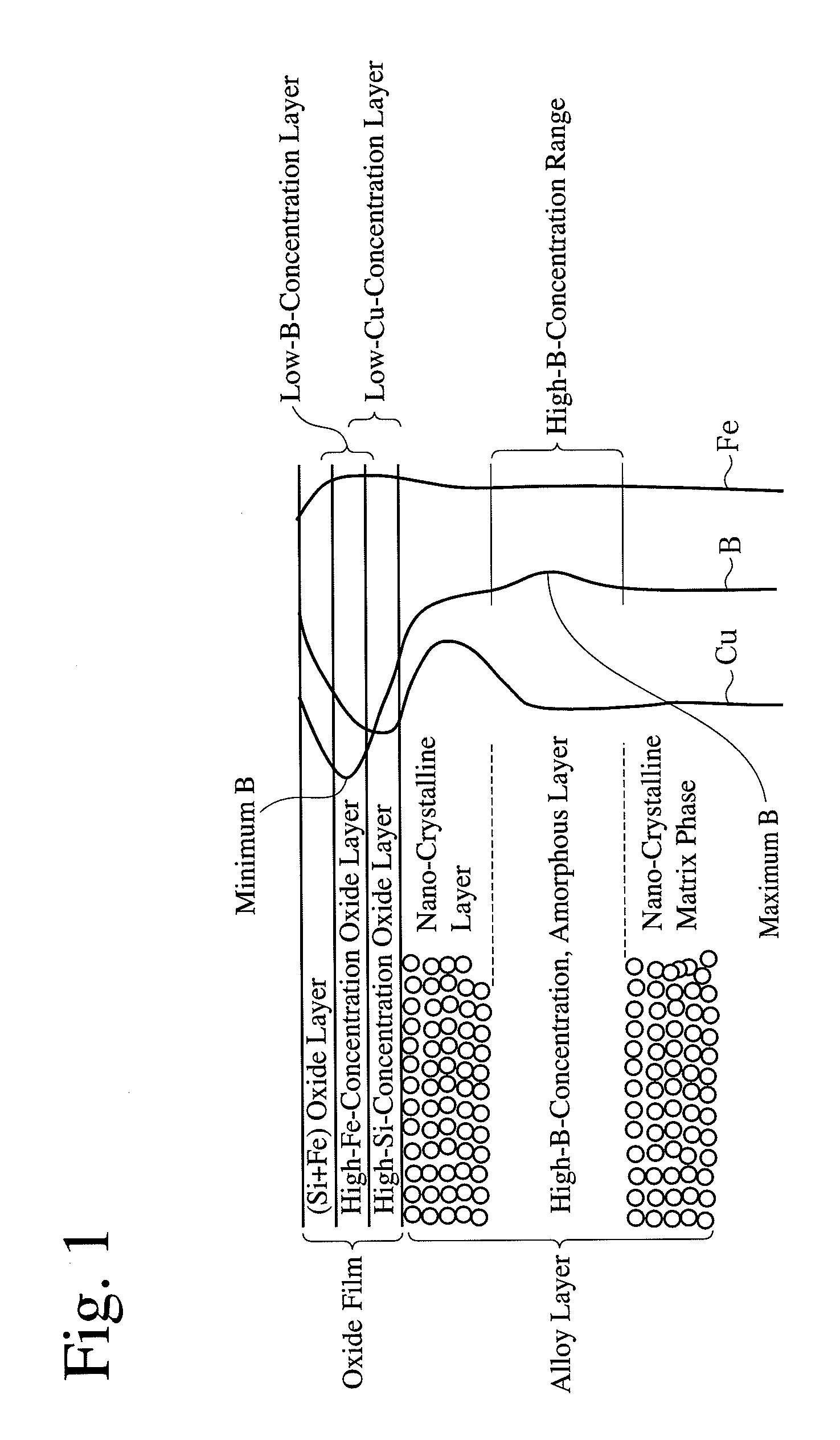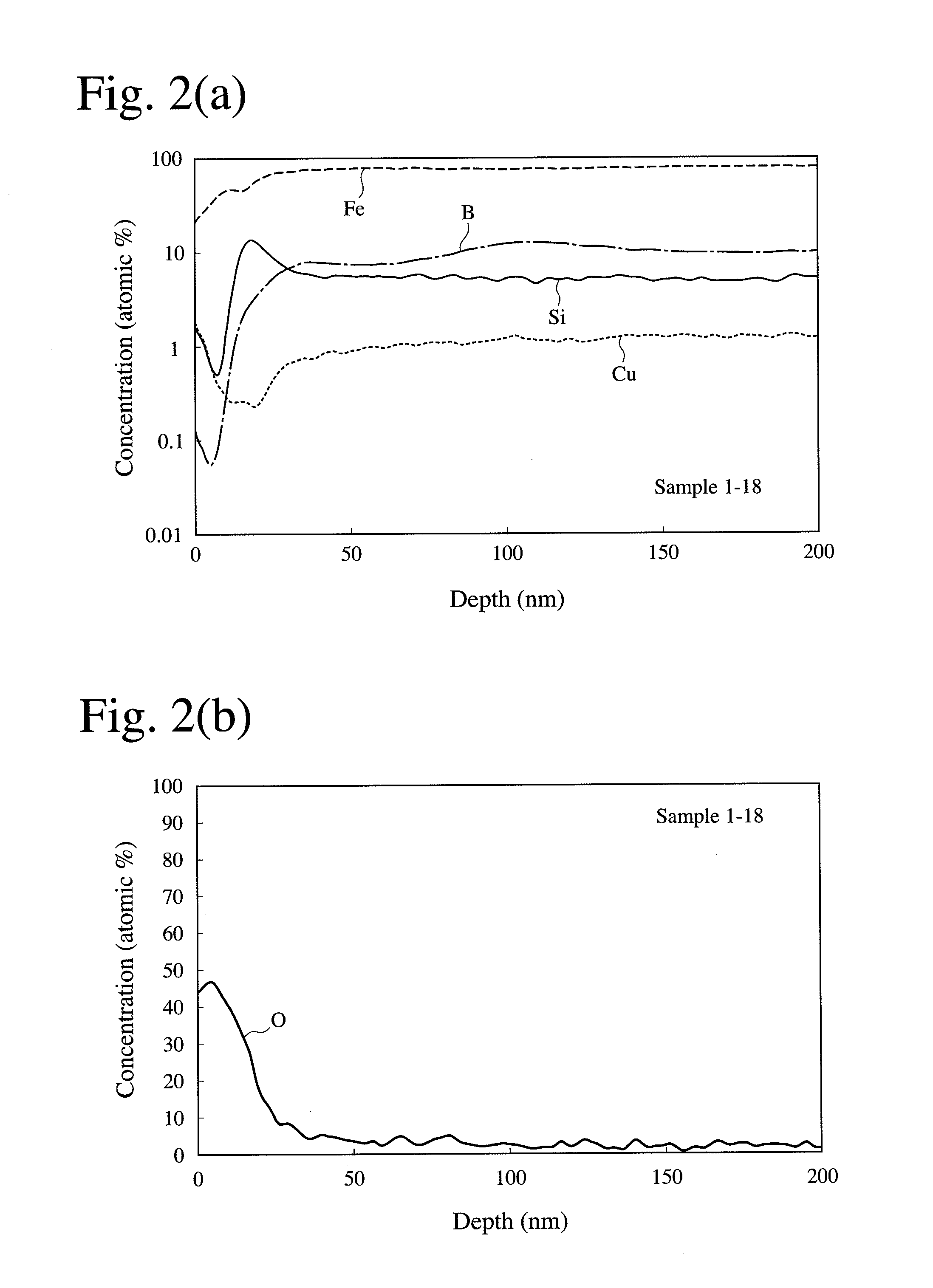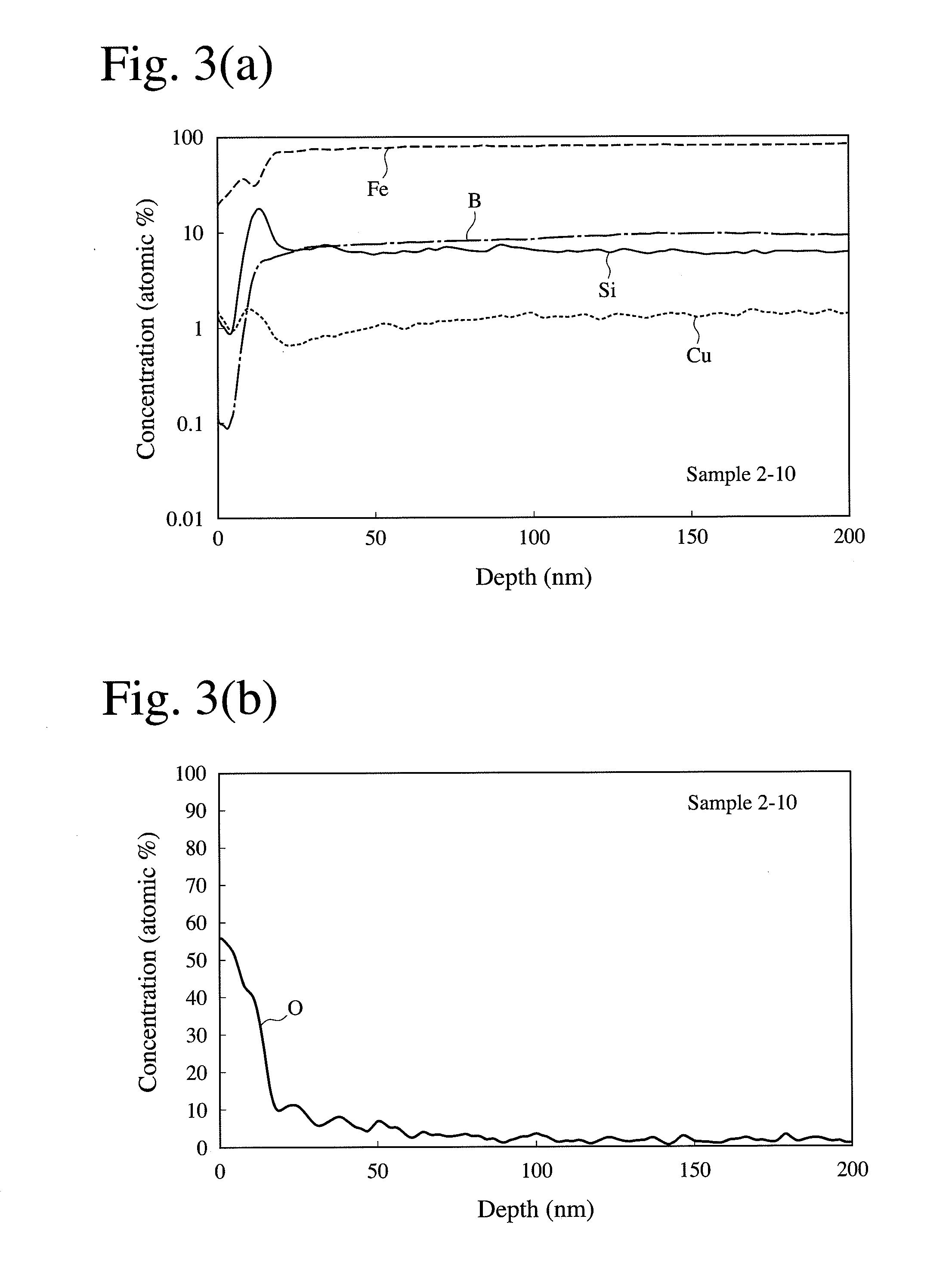Soft magnetic alloy ribbon and its production method, and magnetic device having soft magnetic alloy ribbon
a soft magnetic alloy and production method technology, applied in the direction of magnetic materials, nanomagnetism, magnetic bodies, etc., can solve the problems of large core loss, high cost of co-based amorphous alloys, and inability to easily thin like amorphous ribbons, etc., to achieve excellent insulation, corrosion resistance and toughness, and high saturation magnetic flux density. , the effect of low core loss
- Summary
- Abstract
- Description
- Claims
- Application Information
AI Technical Summary
Benefits of technology
Problems solved by technology
Method used
Image
Examples
example 1
[0096]Alloy melts having the compositions shown in Table 1 were quenched by a single-roll method in the air to obtain primary fine-crystalline alloy ribbons of 5 mm in width and 16-25 μm in thickness each having a structure comprising fine crystal nuclei having an average diameter of 30 nm or less dispersed at a volume fraction of 2-25% in an amorphous phase, with varied stripping temperatures from the roll surface. The stripping temperature of each primary fine-crystalline alloy ribbon was measured by the method described below.
[0097]Each primary fine-crystalline alloy ribbon was placed in a furnace with a nitrogen atmosphere having an oxygen concentration of 10%, and subject to a nano-crystallization heat treatment under the conditions of heating at 120° C. / minute on average, and keeping the highest temperature of 450° C. for 5 minutes. The resultant soft magnetic alloy ribbon was measured with respect to the average diameter and volume fraction of fine crystal grains by the metho...
example 2
[0123]Soft magnetic alloy ribbons each having a structure, in which fine crystal grains having an average diameter of 60 nm or less were dispersed at a volume fraction of 50% or more in an amorphous phase, were produced from an alloy melt of Febal.Ni1Cu1Nb1Si4B12 (Sample 3-1), and an alloy melt having the same composition of Febal.Cu1Nb1Si4B12 except for containing no Ni (Sample 3-2), in the same manner as in Example 1 except for changing the stripping temperature to 300° C. The concentration distributions of Fe, Ni, B, Si, Cu, Nb and O from the free surface toward inside in each ribbon were measured by GDOES. The measurement results of Sample 3-1 are shown in FIG. 5, and the measurement results of Sample 3-2 are shown in FIG. 6. In FIGS. 5 and 6, the origin corresponds to the sample surface.
[0124]Sample 3-1 had a boundary between the oxide film and the nano-crystalline layer near 40 nm, and there was a high-B-concentration, amorphous layer having the highest B concentration near th...
example 3
[0125]Soft magnetic alloy ribbons each having a structure, in which fine crystal grains having an average diameter of 60 nm or less were dispersed in an amorphous phase at a volume fraction of 50% or more, were produced from alloy melts having the compositions shown in Table 5, in the same manner as in Example 1 except for changing the stripping temperature to 300° C. The depth at the highest B concentration was measured on each soft magnetic alloy ribbon. Also, core loss (P10 / lk) at 1 T and 1 kHz was measured on a wound core formed by each soft magnetic alloy ribbon. The results are shown in Table 5.
TABLE 5Depth (nm) atSam-Highest BCore Loss P10 / 1kpleCompositionConcentration(W / kg)4-1Febal.Ni1Cu1Nb1Si4B12554.14-2Febal.Mn1Cu1Nb1Si4B12354.04-3Febal.Co1Cu1Nb1Si4B12504.04-4Febal.V1Cu1Nb1Si4B12504.34-5Febal.Cr1Cu1Nb1Si4B12454.14-6Febal.Cu1Nb1Si4B12804.4
[0126]As is clear from Table 5, the high-B-concentration, amorphous layers were as deep as 30-100 nm. Also, these soft magnetic alloy rib...
PUM
| Property | Measurement | Unit |
|---|---|---|
| volume fraction | aaaaa | aaaaa |
| diameter | aaaaa | aaaaa |
| temperature | aaaaa | aaaaa |
Abstract
Description
Claims
Application Information
 Login to View More
Login to View More - R&D
- Intellectual Property
- Life Sciences
- Materials
- Tech Scout
- Unparalleled Data Quality
- Higher Quality Content
- 60% Fewer Hallucinations
Browse by: Latest US Patents, China's latest patents, Technical Efficacy Thesaurus, Application Domain, Technology Topic, Popular Technical Reports.
© 2025 PatSnap. All rights reserved.Legal|Privacy policy|Modern Slavery Act Transparency Statement|Sitemap|About US| Contact US: help@patsnap.com



